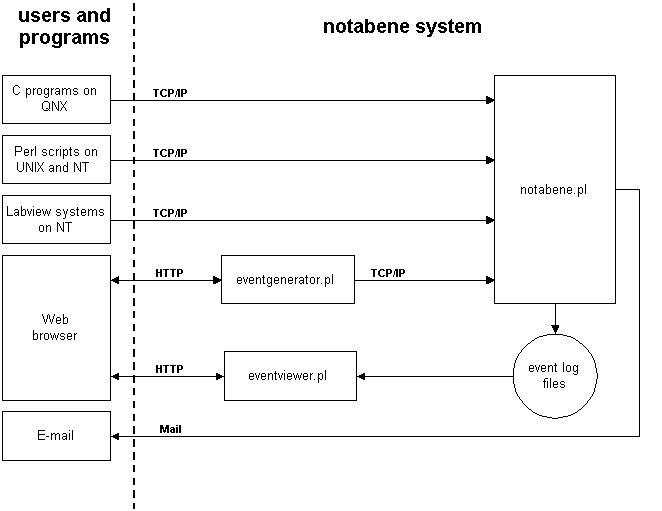
Figure 2: System Overview
The system is comprised of three main Perl scripts: notabene.pl, eventgenerator.pl, and eventviewer.pl; two commercial components: Netscape and Mail; and several configuration and support files (Fig. 2).
The first script, notabene.pl, is a server script and must be running on the host system before it is needed. It sets up a TCP/IP socket (Stevens 1990, 1992) and waits for other processes to establish a connection to it. When this occurs, it captures the message from the connecting system, adds time and location information and queues up the event so that it may be written to the log file after a sufficient number of messages have been received or a specific time period has elapsed. This spooling is done to keep disk activity to a minimum.
As is obvious from the name, eventgenerator.pl allows the user to interactively generate events. When its uniform resource locator (URL) is invoked by the web browser on the client system, the web server on the host system executes the script which then uses the CGI mechanism (Gundavaram, 1996; Stein, 1998) and HTML (Musciano and Kennedy, 1998) to exchange information with that browser and its user. The user can select information and enter text to describe the event to be sent to notatbene.pl for logging. This provides a mechanism to manually create software events that correspond to physical realities that cannot be measured by the DAS (i.e.: tufts added to the model for flow visualization).
To examine the event log files, eventviewer.pl is run using the method described above. It presents a web page that allows the user to select filtering criteria before submitting a request to view the event list. The appropriate log files are searched, and events that satisfy the query are returned to the user in the form of an HTML table.